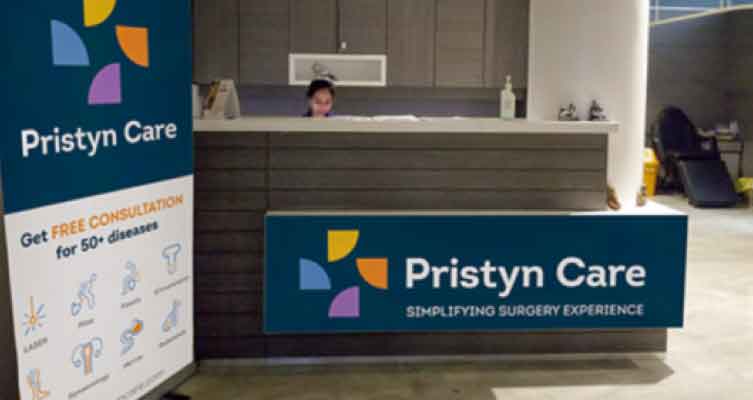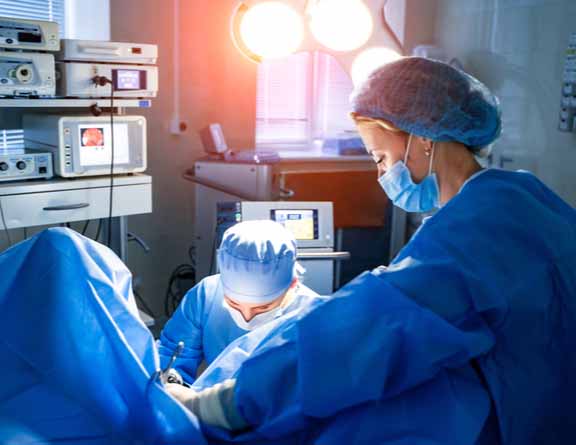
Mumbai
7 day free Phyisotherpy
Insurance Claims Support
No-Cost EMI
4 days Hospitalization




Robotic total knee replacement is a knee replacement procedure that is performed using a handheld robotic device or a robotic arm. The procedure is very similar to a regular knee replacement, but since a robot is used, it improves the surgeon’s efficiency.
Despite its name, robotic surgery is not done by a robot alone. Instead, a robot assists the surgeon during knee replacement by acting as a guide for the surgeon. The orthopedic surgeon is in complete control of the arm and uses it as a surgical tool.
Overall, this results in a much shorter recovery time for the patient due to reduced damage to the tissues surrounding the joint. It is also very beneficial in more complex knee replacement cases, as it offers a better balance in the soft tissues around your knee and better aligns the joint.
Book a consultation with the best orthopedic surgeons near you who are trained in robotic knee replacements.


Robotic Knee Replacement in Mumbai
Before undergoing robot-assisted knee replacement, the orthopedic doctor will conduct a physical examination. Following this, they prescribe diagnostic and imaging tests, including X-Ray, MRIs, bone scans, etc., to find the full extent of knee joint damage and determine the most appropriate treatment option for you.
Robotic knee replacement is a very advanced, minimally invasive procedure. Since the procedure is performed using a robotic arm or device, it is more accurate, and there is little to no damage to the tissues surrounding the knee joint.
Though general anesthesia can be used during the surgery, normally, it is performed under spinal or regional anesthesia. Barring complications, most patients are discharged from the hospital on the same day.
On the day of the robotic knee replacement operation, you will be admitted to the hospital. Following this, your surgeon will check your vital signs to ensure you are healthy enough to undergo surgery.
After that, you will be moved to the operation theater and anesthetized. Once the anesthesia has taken effect, the surgery will be started. The surgical process remains very similar to the traditional total knee replacement.
The only difference is that for a robotic knee transplant, the orthopedist will use a robotic arm to make the incisions and perform the surgery. The robotic arm will help the surgeon avoid unnecessary trauma to the surrounding tissues and provide a quicker recovery period. The chances of potential complications will also reduce drastically.
Overall, the patient will recover knee mobility and function sooner after the surgery. Moreover, there will be minimal scarring and a shorter hospital stay. For further details, you can book free c consultation with our expert knee replacement doctors in Mumbai at Pristyn Care orthopedic clinics.
Best Healthcare Provider for Orthopedic Treatments
We use robotic arms or devices during knee replacement surgery to ensure accurate and precise surgery for advanced long-term results.
Our Orthopedic Doctors use the best prosthesis for robotic knee replacement surgeries, such as Johnson & Johnson, Stryker, Zimmer, Smith & Nephew to promote longevity and durability.
For your smooth and precise recovery post robotic knee replacement surgery, we will help you connect with the best Physiotherapist near you.
We offer free follow-up consultations with the surgeon and provide instructions for post surgery care including dietary tips and exercises to our patients to ensure they have a smooth recovery.
Depending on the type of surgery, type of implant, and the severity of the condition, a robotic knee replacement takes around 1 hour to complete.
Yes, patients usually have lesser pain after a robotic knee replacement, compared to a traditional knee replacement, because the incisions from robotic surgery are minor and precise that avoid any damage to the surrounding soft tissues, thereby preventing the exposure of the knee and resulting in a safer surgical process.
Yes, it is generally considered to be a better alternative for open knee replacement. Most surgeons prefer robotic knee replacement over other knee replacement procedures because it provides quicker recovery and better knee joint function.
You can perform half-squats easily after a knee replacement. But deep squatting is discouraged after knee replacement, as it puts pressure on the joint and can damage the surrounding tissues.
Yes, most insurance policies do cover knee replacement. In fact, some insurance providers even provide special standalone policies for knee replacement. Most good insurance policies cover both pre-hospitalization and post-hospitalization charges, such as physiotherapy, medication, etc., in addition to the surgery costs.
Robotic knee replacement is a very successful procedure. In fact, its success rate is even higher than minimally invasive total knee replacement because the cuts made by a robotic arm are even more precise than arthroscopic surgery.
If a patient has indications of a traditional knee replacement, such as severe knee pain, and joint degeneration, then they are a candidate for robotic-assisted knee replacement too. Robotic surgery is also suggested for patients with complex knee joint issues, such as deformities in the femur after an injury, complex knee joint degeneration, knee replacement revision surgery, etc.
If you have a desk job that does not require a lot of physical activity, you can start working around four to six weeks after the surgery. However, if you have a physically demanding job, you may need to wait for at least a few more weeks before returning to work.
After a successful knee replacement, the knee implant usually lasts for at least 20 to 25 years. Total knee replacement implants generally last longer than partial knee replacements. The longevity of the knee implant depends on various different factors, including the success of the surgery, the individual’s age and lifestyle, etc.
Yes, even though robotic knee replacement provides more natural knee joint movement and function after the surgery, it can only become successful if the patient follows their physiotherapy requirements and their orthopedist’s instructions during their recovery period.
There are many advantages of robotic-assisted knee replacement over traditional knee replacement, such as:
Though robotic knee replacement is very safe, it also has some risks similar to traditional knee replacement, such as
Another disadvantage of a robotic knee replacement is that it can be very expensive, causing a financial burden on the patient. Moreover, most orthopedists are not familiar with the use of a robotic arm and can find it very difficult in the initial period.
As per the latest studies, serious complications are very rare during robotic surgery and only occur in about 2% of knee replacement patients. Make sure you undergo a very thorough diagnosis and clearly discuss all such issues with your surgeon before the surgery to ensure a successful outcome.
Yukta Gurjar
Recommends
My experience with Pristyn Care for robotic knee replacement was life-changing. The doctors were highly skilled and understanding, making me feel at ease throughout the process. They explained the procedure in detail and addressed all my concerns with patience. Pristyn Care's team provided exceptional pre-operative and post-operative care, ensuring my comfort and closely monitoring my recovery. They were supportive and available to answer my questions throughout the journey. Thanks to Pristyn Care, my knee is now pain-free, and I can move freely. I am grateful for their expertise and compassionate care during this transformative surgery.
.svg)
.svg)